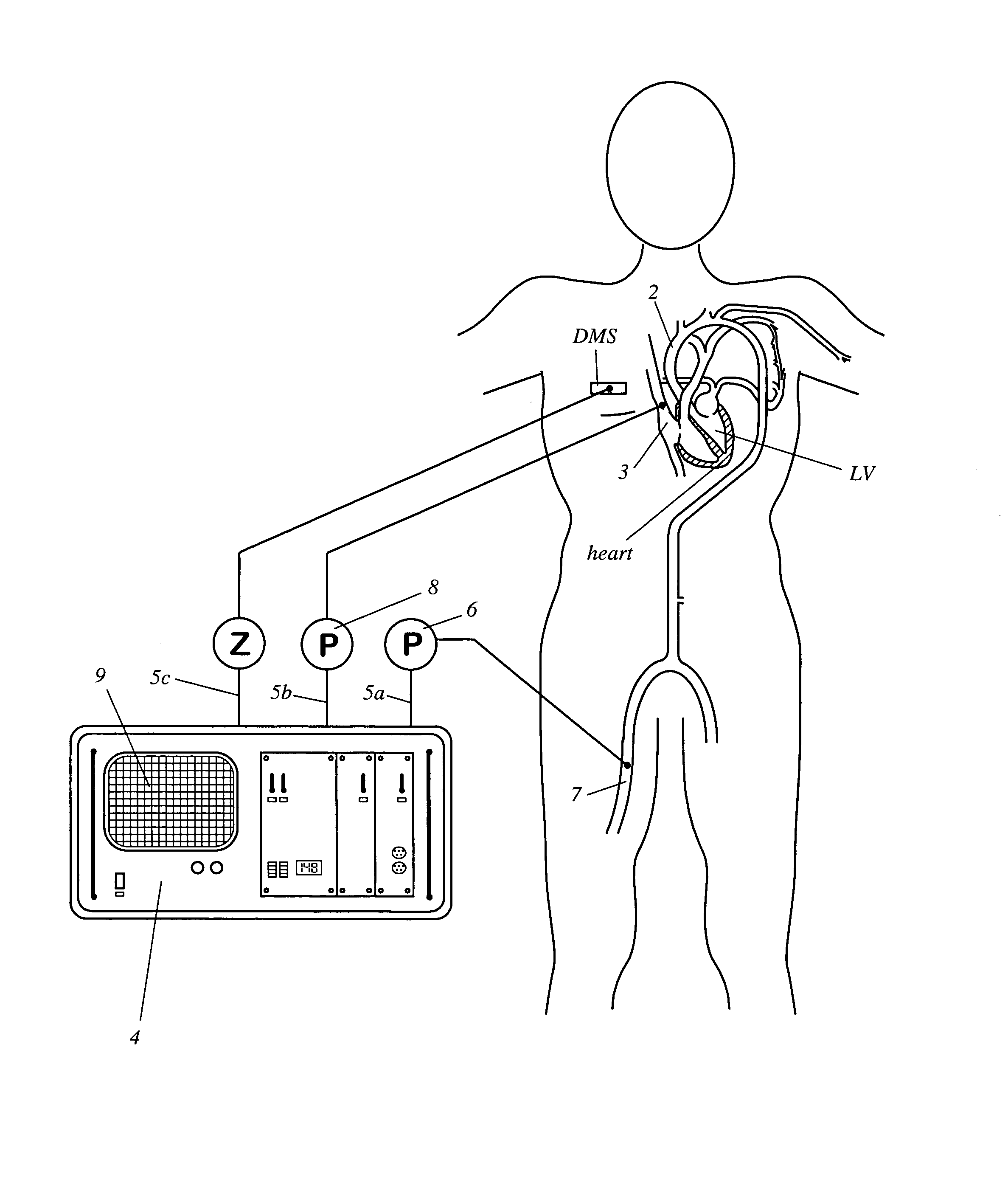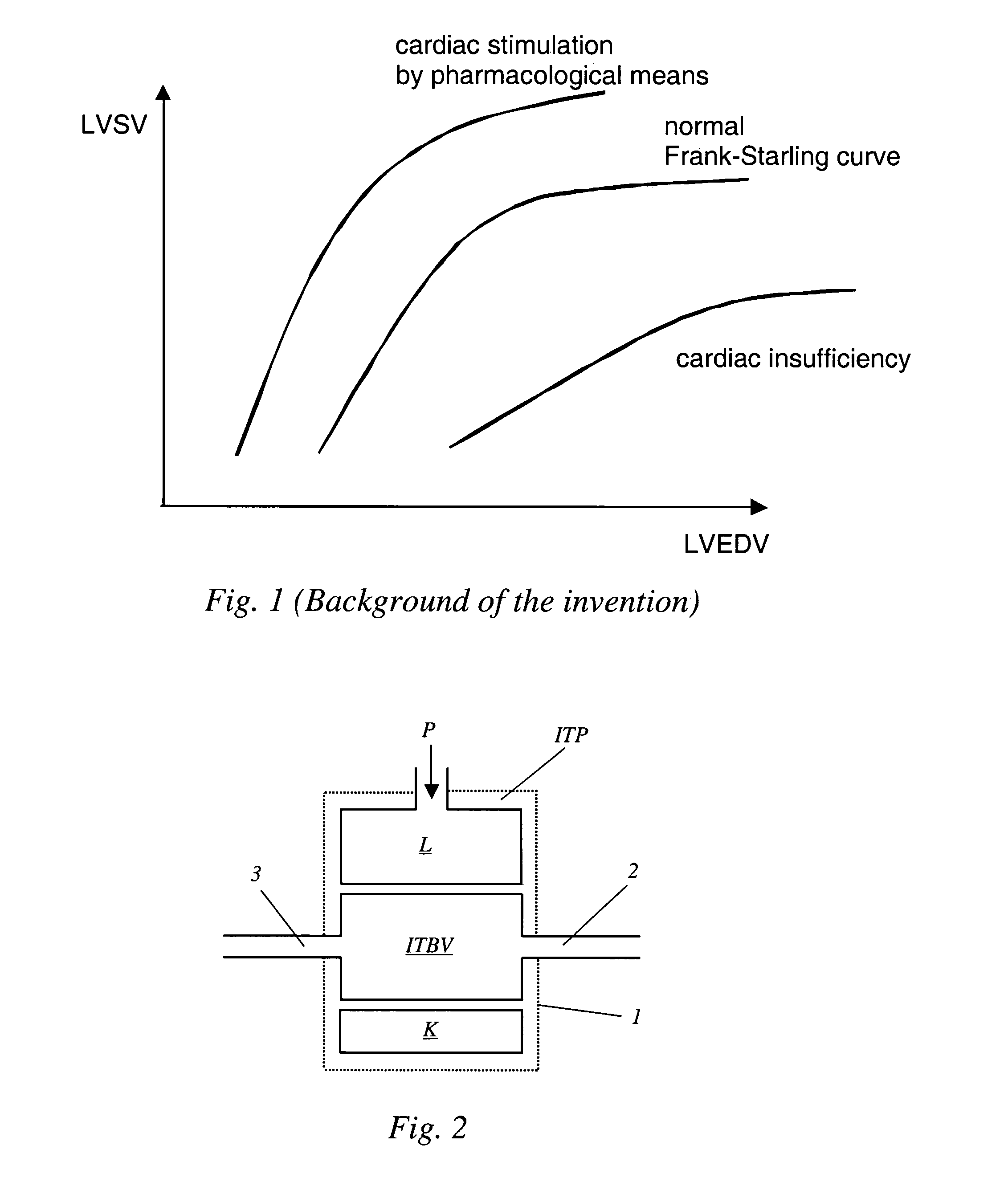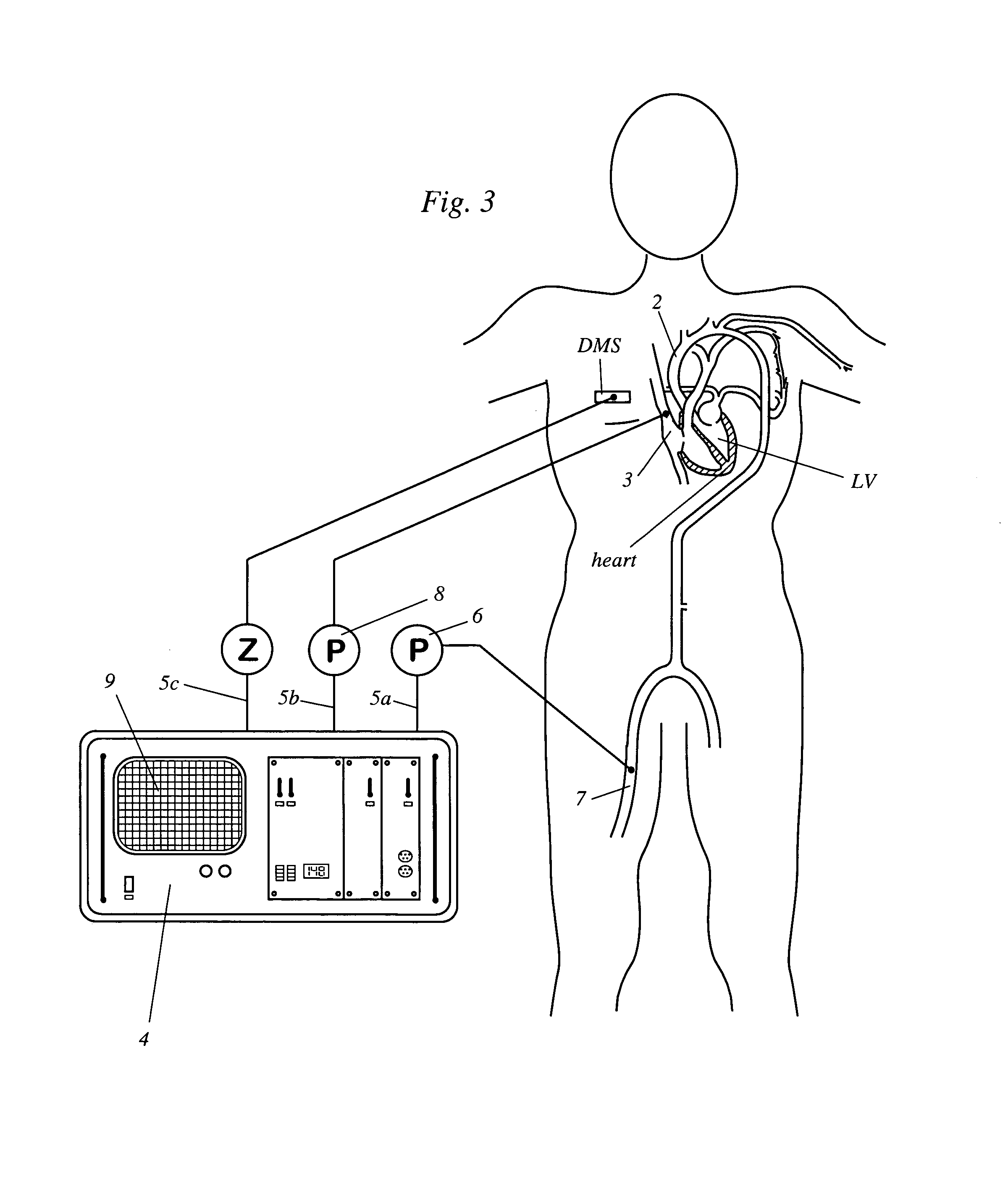Apparatus for determining cardiovascular parameters
a technology for determining cardiovascular parameters and apparatus, which is applied in the direction of sensors, catheters, diagnostics, etc., can solve the problems of not being able to take, prior art apparatus does not provide any information as to what happens, etc., and achieves the effect of reliable evaluation of cardiac volume responsiveness and lessening the validity of measuring results
- Summary
- Abstract
- Description
- Claims
- Application Information
AI Technical Summary
Benefits of technology
Problems solved by technology
Method used
Image
Examples
Embodiment Construction
[0033]FIG. 2 shows a schematic view of the volumes affected by or affecting the intrathoracic pressure (ITP) and other characteristic pressures that are of significance in connection with the invention. Inside thoracic wall 1, the ITP acts upon the intrathoracic blood volume (ITBV) which is composed of the above named intrathoracic low-pressure capacitance system (ITLPCS) and the left ventricular end-diastolic volume (LVEDV). Other volumes inside thoracic wall 1 are the gas-filled lung volume L and, if applicable, additional volumes K, such as extravascular lung fluid, pleural effusion, hematothorax, etc., which must be regarded as constant during a measuring period. Aortal pressure AP prevails in the aorta 2 while central venous pressure CVP prevails in the central vein 3. In the case of artificial respiration, the airways are subject to external pressure P.
[0034]The apparatus 4 shown in FIG. 3, via input channel 5a, continuously monitors the arterial pressure measured by the press...
PUM
 Login to View More
Login to View More Abstract
Description
Claims
Application Information
 Login to View More
Login to View More - R&D
- Intellectual Property
- Life Sciences
- Materials
- Tech Scout
- Unparalleled Data Quality
- Higher Quality Content
- 60% Fewer Hallucinations
Browse by: Latest US Patents, China's latest patents, Technical Efficacy Thesaurus, Application Domain, Technology Topic, Popular Technical Reports.
© 2025 PatSnap. All rights reserved.Legal|Privacy policy|Modern Slavery Act Transparency Statement|Sitemap|About US| Contact US: help@patsnap.com



